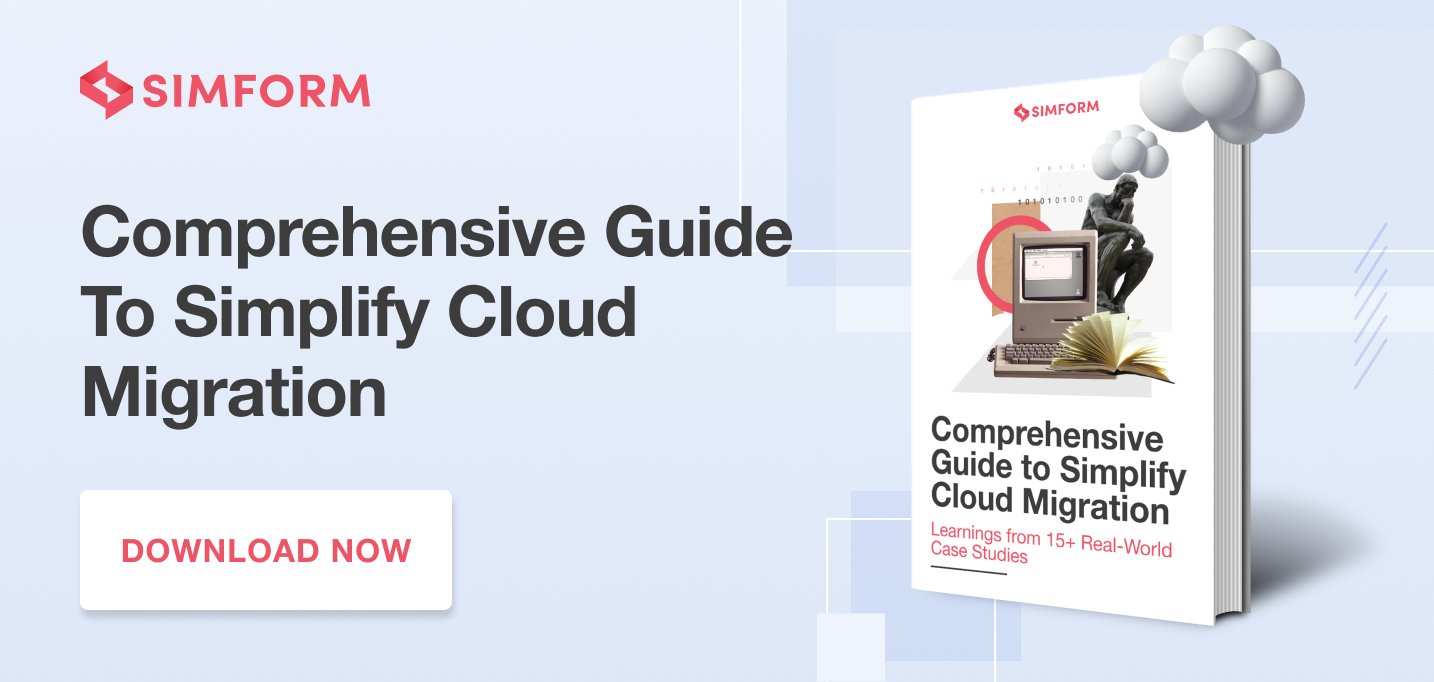Information and technology are synonymous with flexibility and speed. From on-premise infrastructure to cloud-based applications and now multi-cloud hosting, we’ve come a long way.
To speed up the response time in enterprise applications, it took optimized functions and practices in on-premise infrastructure.. Eventually, it transformed to cloud-based apps, and finally paved the way for a multi-cloud strategy.
What’s more,reduced response times and increased flexibility emerged as the most appealing factors for businesses. And so they started upgrading themselves from a cloud-based technology to a more diversified one.
Here’s what Gartner’s research has to say about this:
“Most organizations choose to work with multiple cloud providers, for a host of different reasons.”
It hints that people are more interested in adopting a multi-cloud strategy. And as a CTO, you might want to know some crucial details.
- What’s the difference between multi-cloud and single cloud strategy?
- How does multi-cloud make for faster response times and create better customer experiences?
- Is adopting a multi-cloud strategy secure?
This post aims to answer these questions and more.
What is Multi-Cloud Strategy?
Multicloud strategy is a combination of two or more cloud-computing services. When a company or business uses cloud services from different cloud vendors, they’re using a multi-cloud system. This system can be a set of all private, all public, or a combination of private and public clouds.
It allows the distribution of computing resources among multiple cloud-computing platforms. It minimizes the risk for possible downtimes, hence, creating a secure environment for data. Moreover, it increases storage capacity and computing power. It scales business operations by leveraging the on-demand storage and real-time syncing capabilities, which is today’s business mandate.
For example, you are a business serving only the market in your local country. Your software development partner has built you an application using a single cloud strategy that performs great even during rush hours.
But what if you want to expand and target users overseas? Until now, you’ve had virtual machines and other cloud options but serving a large-scale user base in distant locations requires multiple data centers at various locations.
Thus, you evaluate and aim to deploy multiple cloud platforms offering data centers in different regions. It can ensure same performance and quality across different areas. And it offers capabilities to manage workloads with sustainability in future.
The ultimate solution for multi-cloud architecture looks like the following graphic:
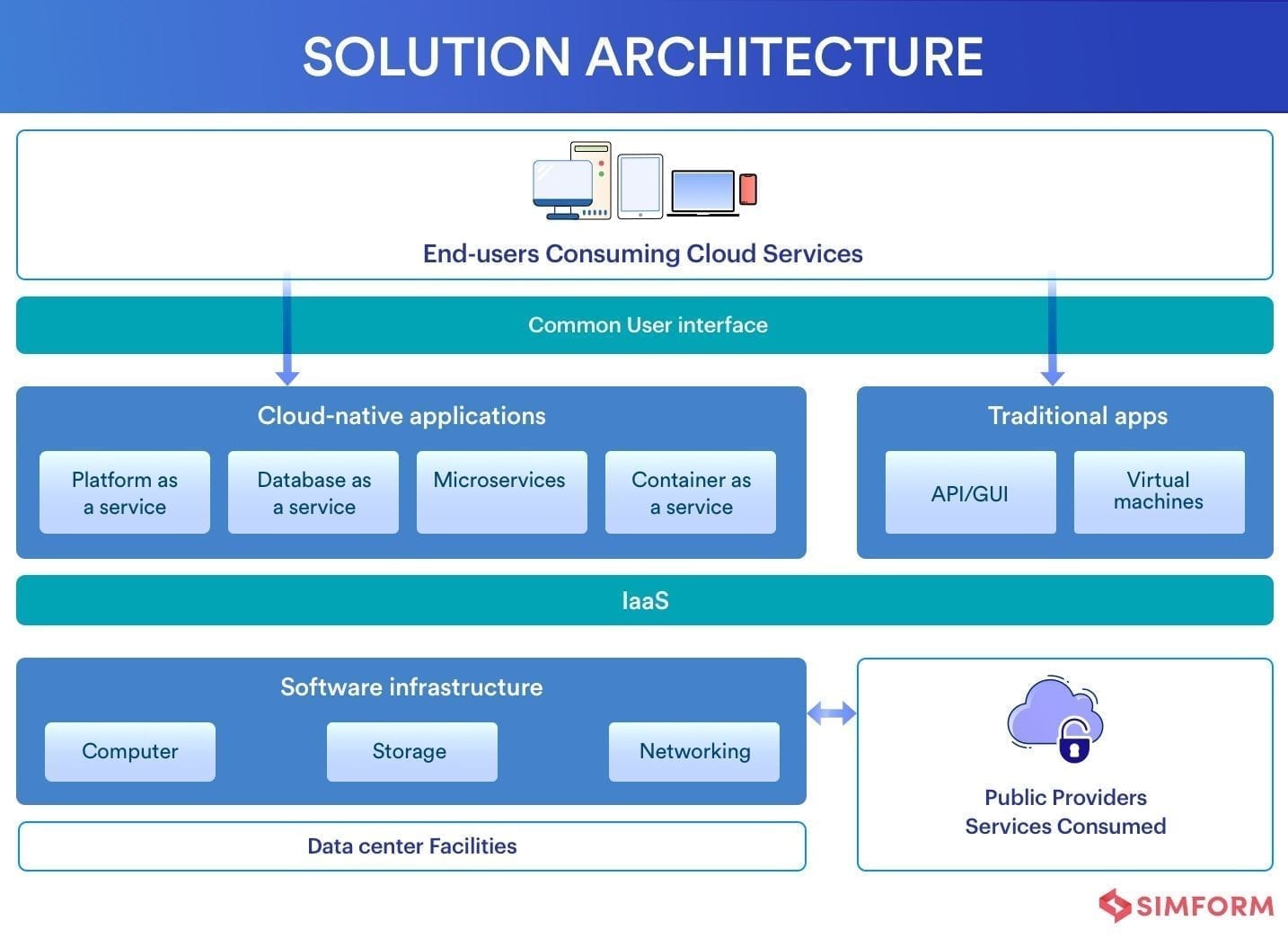
Before we begin with a detailed discussion on multi-cloud strategy, let’s quickly refer to the difference between the two similar-looking cloud concepts: multi-cloud vs. hybrid cloud:
Difference Between Multi-Cloud vs Hybrid Cloud
Both multi-cloud and hybrid cloud refer to cloud hosting. And as their names suggest, both involve more than one cloud. The main difference, however, is in the combination of deployment types.
Multicloud is a combination of more than one cloud deployment of the same type. It could be public or private but is sourced from multiple cloud vendors or cloud service providers(CSPs.) Here the deployment type is the same but clouds are sourced from different vendors.
While a hybrid cloud is a combination of multiple cloud deployment types, it could combine one private and one public cloud. Or maybe two private and one public cloud. It depends on the facilitation of middleware/application-programming interface integrated with cloud infrastructure. Here the deployment types are different, but they need not be sourced from different vendors/service providers.
The image below refers to the difference between multi-cloud vs hybrid cloud:
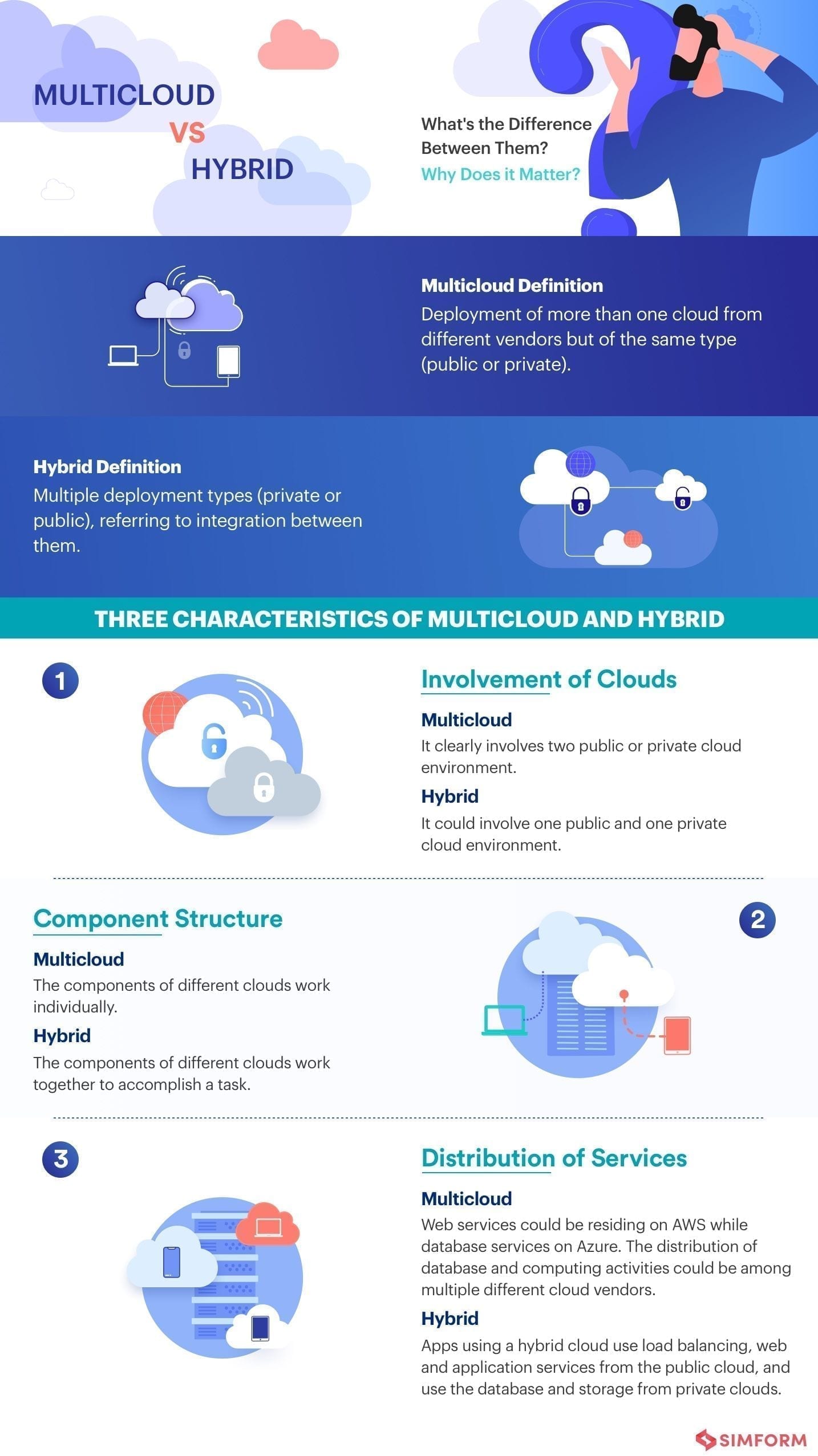
Benefits of Multi-Cloud: What Makes Multi-Cloud a Popular Choice?
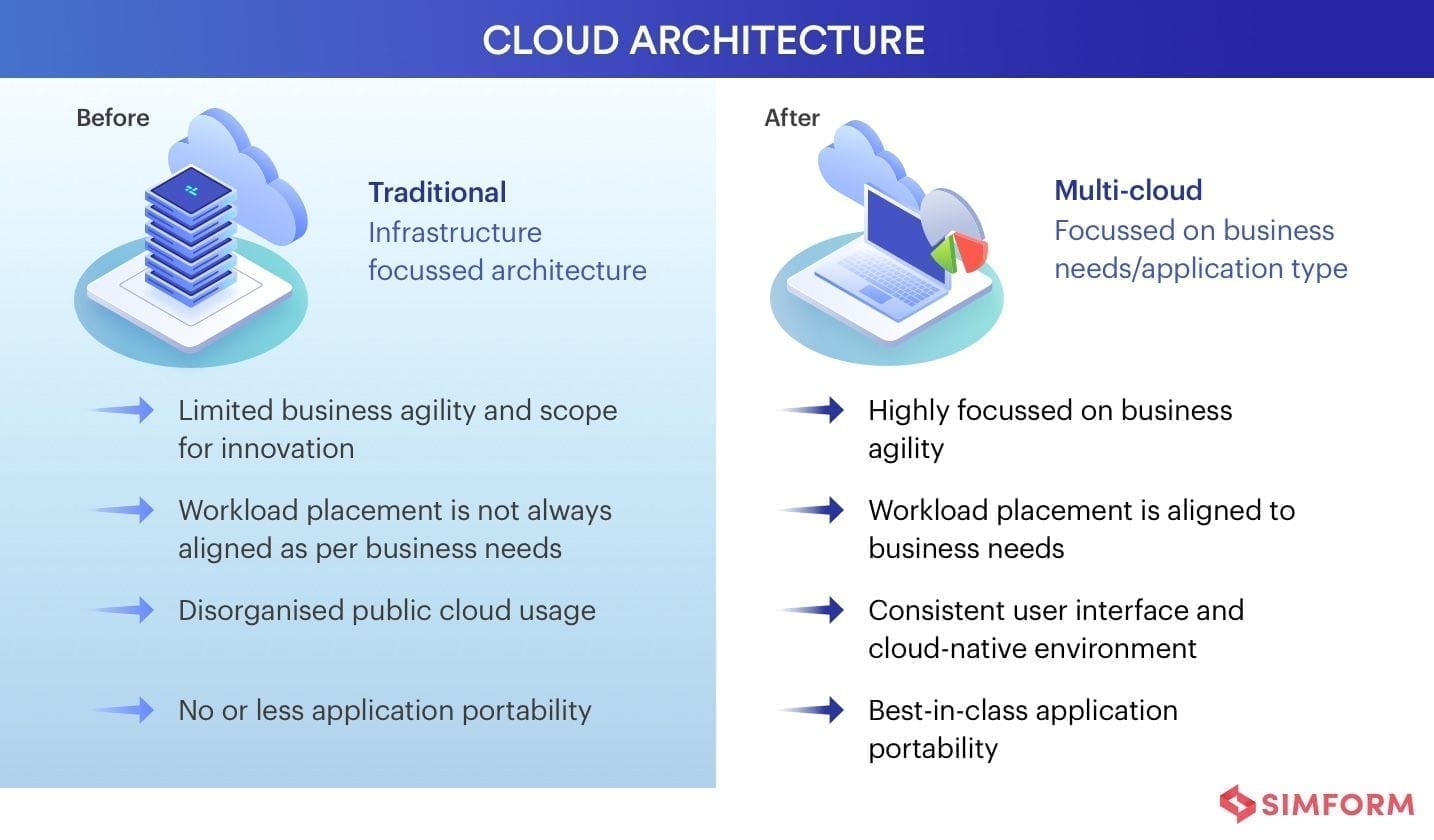 Here comes the concept of multi-cloud strategy.
Here comes the concept of multi-cloud strategy.
Multi-cloud strategy upgrades IT systems to the extent that they become equipped to fulfill an organization’s all critical system needs. It includes improved performance, application-response times, cloud services, cost optimization for cloud deployment, isolation of sensitive customer data, along with other crucial functions.
For example, application response times are directly proportional to the distance between users and hosting location of a cloud. You can reduce response times by serving users from the nearest multiple locations. It makes organizations available 24/7 with their services and offerings. Users communicate more actively than ever to the business and enjoy better response times.
The use of multiple clouds enables organizations to create a safer place for data.
Here’s a list of top benefits that multi-cloud strategy offers:
- Business agility– Organizations can accelerate their internal processes, improve customer experiences, and adopt a systematic approach to gain competitive advantages.
- Business flexibility– It offers infrastructure flexibility to the organizations since it would combine on-premise infrastructure and private and public cloud services, so companies can get operational and financial benefits.
- Choice of workload distribution- Organizations get a choice of distributing the workload among multiple cloud providers. They need not depend on single-cloud providers and their locked-in terms. Using various platforms gives them the provision to utilize multi-year discounts from multiple providers.
- Best of infrastructure benefit– An obvious benefit is that businesses can use one’s specialty in certain areas. Different cloud providers have expertise in specific areas, so organizations can acquire diverse capabilities.
- Competitive pricing– Businesses get the advantage of comparing one’s services and capabilities to others. Plus, they get the best rates thanks to the availability of many options.
- On-demand needs- Organizations can quickly meet the growing demands of their business since this strategy eliminates the risk of relying on a single-cloud provider. Hence, it avoids unpredictable shortages that create dependency problems.
- Backup & recovery– The multi-cloud strategy has a proper arrangement to protect critical business data. It offers backup and recovery capabilities as a shield against power outages, failure of hardware, and other snags.
- Security- Individual cloud providers are responsible for protecting their infrastructure. And this much-needed security measure is undertaken via regular assessment of the cloud from the providers.
- Network Performance- It enables businesses to build low-latency, high-speed infrastructure that gives faster response times and a better user experience.
- Excellent ROI– Businesses can use various features of all the different clouds involved. It helps organizations decide which cloud is the best fit for the rapidly changing IT needs. So one cloud from the system can even out the shortcomings of another, and enterprises can use diverse offerings and computing functions with significant gains on multi-cloud investments.
- Low latency– It eliminates the minor delay that customers have to bear with applications because of distant locations between the apps stored and access points. Multi-cloud overcomes this hurdle by bringing the data center closest to end-users. It brings down the number of server hops and makes a minimum latency period for users’ requested data.
- Innovation- Multi-cloud strategy pushes organizations towards new creation. It offers trying fresher technologies and unique features for the benefit of customers. Using a single cloud limits the usage of technology and sets boundaries for innovation. In contrast, multi-cloud provides creative solutions from different providers and their experts.
Disadvantages of multi-cloud
While a multi-cloud strategy offers numerous benefits, it is essential to weigh the disadvantages too that may come with it. Here are some potential disadvantages of a multi-cloud strategy.
Management complexity and overhead
Managing multiple cloud environments can introduce complexity into an organization’s IT infrastructure. It requires expertise in different cloud platforms, integration between different services, and coordination across various providers. Moreover, organizations must manage different contracts, service-level agreements (SLAs), billing structures, and support channels. This can lead to increased administrative overhead and complexity in coordinating and monitoring cloud resources.
Security and risk management
Adopting a multi-cloud strategy introduces additional security considerations. Organizations need to ensure consistent security measures across all clouds, implement appropriate access controls, and monitor for potential vulnerabilities and threats across multiple environments. Moreover, they must ensure consistent data protection, privacy, and regulatory compliance standards across all clouds.
Additional skills and training
Operating in a multi-cloud environment may require additional training and skill development for IT staff. Each cloud platform has its own set of tools, services, and management interfaces, necessitating expertise in multiple technologies.
Increased cost/resource management
Managing costs across multiple clouds can be more complex than in a single cloud environment. It requires careful monitoring of resource usage, billing, and optimization to avoid unexpected expenses. Additionally, organizations may need to invest in additional tools and resources for centralized cloud management and cost optimization.
It is important for businesses to carefully weigh the pros and cons of a multi-cloud strategy, considering their specific requirements, resources, and capabilities. A well-planned implementation, proper management, and strong governance can help mitigate these challenges and leverage the benefits of a multi-cloud approach effectively.
When to Use Multi-cloud?
Here are certain use cases where organizations specifically choose to go multi-cloud:
Application design:
When your business has requirements for building diverse applications, the development team’s valuable time goes to re-engineering the application to the architecture of a specific cloud. Companies tend to rebuild their application architecture based on cloud architecture when using a single-cloud provider. A multi-cloud architecture is beneficial in such cases where you can build applications with different tech stacks and choose suitable cloud platforms.
Data governance:
Businesses want to create a safe environment for their IT systems. And hence, they must have a contingency backup plan. Companies can use multi-cloud platforms to protect their data when one system is in danger of cyber attacks. In such cases, they can quickly shift affected data to another cloud. However, businesses must uphold governance protocols in cloud environments.
Apps for distantly located users:
Your target users must be located near a data center or a particular headquarters when you have single cloud integration. But when your target market is situated in some distant location or is not close to a preferred data center, you should use a multi-cloud strategy. It helps reach far-away users and reduces response time with its multiple centers.
Modern apps:
The latest development approach of building apps is more stylish and modular. Organizations need futuristic tools and flexible services to create functional applications. You can consume multiple services from cloud vendors using this approach.
High-performance apps:
To build high-performance apps, you need to optimize the workloads and make minimum hops for service requests between data centers and users. The multi-cloud strategy does this optimization accurately and efficiently.
Is Multi-Cloud Strategy Secure? How to Manage It?
Despite cloud vendors offering optimum data protection services, there’s an additional layer of complexity in managing the accesses and security of applications. Adopting these best practices should safeguard your application when consuming services from multiple cloud vendors:
- Adhere to data classification and zero trust policy when sharing credentials with employees in an organization.
- Keep track of security upgrades and concerns from service providers to avoid unexpected vulnerabilities.
- Form coordinated approach security across endpoints and networks. Keep a tab on working conditions of infrastructure orchestration and application integration with multiple platforms.
- Monitor if there are any unsanctioned applications deployed.
- Use tools that offer visibility and monitoring and increase efficiency in multi-cloud environments.
- Stay informed of the latest updates while securing cloud-based apps and standard offerings from vendors.
- Assess your cloud vendor’s capabilities. Check if they offer you the rights and controls and whether they adhere to the standard practices in the market.
- Educate your organization’s IT team on cloud services. Communicate with the team about processes, policies, and commitments with vendors.
However, implementing these practices isn’t difficult since you can use the individual tools for security management and control monitoring. These tools monitor and secure communications within apps and encrypt the routing communications.
How to get Started With Multi-Cloud Strategy?
Flexera State of the Cloud Report 2023 indicates that 87 percent of respondents are using a multi cloud strategy – that means almost all enterprises have embraced the multi-cloud setup.
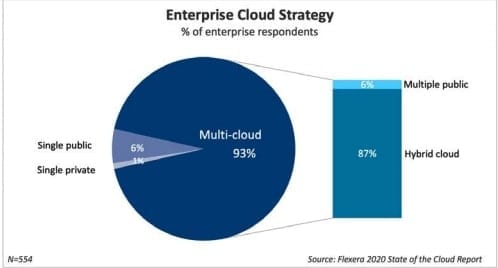
The reasons for this interest include various decision drivers. So let’s check out some of the essential steps to build a multi-cloud strategy:
Identify the need
It’s all about researching within your own organization. You need to have the exact motivation to go multi-cloud.
- Identify the challenges that traditional IT operations face.
- Compare the conventional vs modern cloud-based application development processes.
Traditional processes lack automation and increase the timeline of processing a request with approvals and paperwork. Enterprises need to eliminate the lengthy approvals process to access infrastructure.
With multiple vendors, you’d have faster processes, and the access time for infrastructure would be minimized from days to minutes. Your IT teams are now more enabled with technology, and thus, can automate tasks and tedious manual work – from development to testing and production. Overall, IT teams become more efficient and organized with less expense.
Suitability of clouds
Once you’ve clearly identified the demand for a multi-cloud strategy, focus on these two aspects:
- How many clouds do you need?
- What type of applications do you need to deploy to multiple cloud providers?
Most organizations under a multi-cloud strategy consist of a combination of private and public clouds. But what’s most suitable for your requirements should be based on certain considerations.
For example, applications that could be deployed on clouds are chosen based on the specific services used in them. Some projects may use cloud-native services or containers.
These specifications in technology need to be examined before choosing a cloud provider. Checking out the comparability between an application and cloud platform does a fair job of selecting the right solution or a combination of cloud solutions.
Here are some critical considerations to take into account while implementing a multi-cloud strategy:
- Is it required to move all existing applications?
- What specific applications need certain cloud requirements?
- Vendor lock-in period about each cloud provider. Why is it essential to avoid?
- What’s the long-term impact of your present choice of cloud service providers on the infrastructure?
- Which geographic locations does your cloud service provider offer?
Identifying challenges
Challenges with multi-cloud could be of two types. One is from within the organization, while the latter is with external resources, i.e., the multiple cloud vendors. It checks the soundness of technicalities your IT teams possess, and how they use it to make the most out of the multi-cloud strategy.
At first, identify the challenges coming your way in implementing a multi-cloud strategy successfully. It means the goals of going multi-cloud should be achieved with minimum obstacles.
For instance, your goal is to reduce cloud spend. You can compare different aspects of cloud-based solutions to multi-cloud strategy.
- It will help if you analyze the pricing models of different providers
- Allocate cloud costs.
- Compare pricing models and offerings of other vendors.
- Identify unnecessary spending.
- Automate practices that eliminate waste of resources allocation.
- Discuss with technical teams the spending and form methods.
You need to focus on putting frictionless parameters that monitor and guide teams to perform at certain levels—for instance, increasing the availability of cloud resources to concerned business units and teams as quickly as possible. They should be receiving access directly from the vendors.
Let's build your multi-cloud app together!
Experiences Shared by Companies Using Multi-Cloud Strategy
Starting with a recent example of multi-cloud success.
AstraZeneca
AstraZeneca, a leading pharmaceutical company, shares its success story of conducting Covid-19 vaccine development and rollout.
It was a crucial yet challenging task for them to test pre-covid antibodies and collect adverse event data to send to relevant organizations. The company relied on four major public cloud providers, including Amazon Web Services (AWS), Microsoft Azure, Google Cloud Platform, and Alibaba, they successfully ingested the data. They made it available to other organizations as well for cross-checking purposes. This was the one-way multi-cloud strategy that made the organization capable of delivering results in such an emergence of time.
VR Group
VR Group, a government-owned railway company in Finland, has transformed its operations for better performance using a multi-cloud strategy.
The firm used Microsoft Azure and AWS as their cloud platforms to better service user experience reliability. They aimed to modernize their legacy apps and implement DevOps culture in the firm.
Transportation company
The multi-cloud strategy enabled a transportation company to leverage resource allocation automatically. Plus, they significantly optimized resource allocation, saved a significant amount of time and money spent on a cloud as the multi-cloud system only uses required solutions. This information is revealed by a senior MIS manager of the transportation company of over 500 employees.
They used a multi-cloud strategy to consolidate the number of workloads, accommodate their old hardware unit, and store the data internally and in the Azure cloud.
Segment
A customer-data infrastructure platform, Segment uses multiple cloud providers, including Amazon ECS and Google cloud. Their main aim was to cut down on cloud spending since they were mainly relying on autoscaling and wanted to optimize cloud costs.
With the help of multi-cloud management tools and implementation, their employees could better understand the costing problem and perform well on resource allocation.
Icertis
Icertis is a software company renowned for providing contract-management software to enterprises. They share their success in adopting multi-cloud.
They wanted to understand their cloud spending against revenue. Icertis also aimed at better utilizing the infrastructure in terms of its capacity. They reveal that they are saving time and becoming significantly more efficient with multi-cloud. Additionally, they observed a notable reduction in costs because of the freedom to select particular requirements in clouds. So the resources get allocated as per the exact needs.
Conclusion
When switching to a new environment or partnering with a new platform, you must first identify your needs. It only then becomes the right blend of ingredients to give you the desired flexibility, ideal costs, and scalability. You can implement a multi-cloud strategy correctly by examining your current situation, with a focus on challenging parts that need reform or work – particularly within the infrastructure team who works on cloud technologies and is supposed to consult with multiple cloud vendors.
You can’t start just by knowing the benefits. It’d be best to identify cloud-based apps or services based on their deployment and handling processes. While drafting an outline about current outcomes and available resources, you foresee the unexpected problems that might pop up and know that it doesn’t stop your company from upgrading practices.
It’s a given that everybody has a fair idea about one or another cloud vendor.. It’s a combination of platforms that they have used in the past with one or another vendor. So, there’s nothing that should worry you while adopting this strategy.
Reach out to us to discuss multi-cloud strategies, cloud-based apps, or cloud platforms. Share with us your views and concerns on adopting a multi-cloud strategy.
